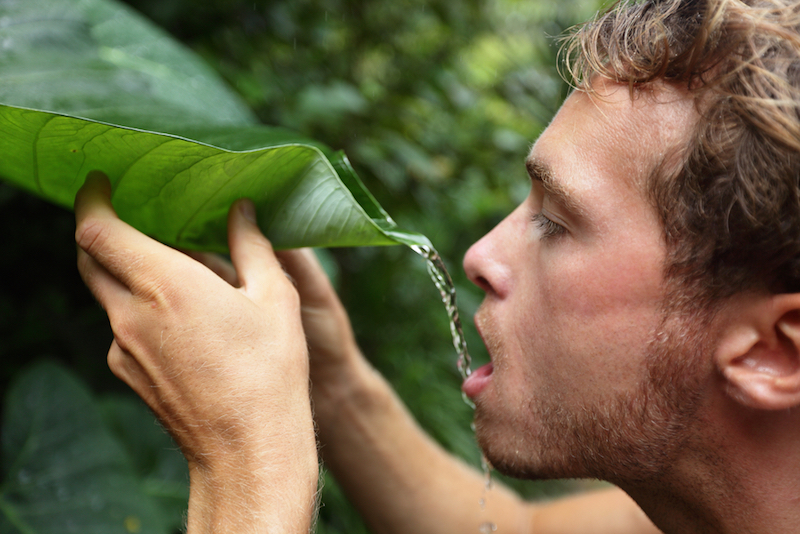Wild Meals: Mimicking Reality TV Could Lead to Fatal Poisoning

NEW ORLEANS — TV shows like "Survivor" sometimes depict contestants consuming raw animal meat or wild plants as food, but a new study shows why people should not try this at home. The practice can result in serious, painful and potentially fatal infections, the study found.
Researchers reviewed 60 cases of people in the U.S. who contracted foodborne infections after eating raw animal meat or plants that were recommended as safe on "Survivor."
In six cases, people (mostly males) ate poisonous plants that looked very similar to edible plants recommended on "Survivor." Five of these people died from their infections.
"The survivalists recommend that you consume or make salads out of edible plants," said study researcher Dr. James Diaz, of the Louisiana State University Health Sciences Center, who presented the work here today (Nov. 18) at the American Public Health Association meeting. The problem is, "unless you know exactly what you're looking for, it's easy to confuse highly poisonous plants with edible plants," Diaz said.
Of the 54 cases that involved people who got sick after eating raw animals, 38 involved people who were infected with a parasite called rat lungworm, or Angiostrongylus cantonensis, often after eating certain snails, larval slugs or frogs, as seen on the show, the study found. Generally, rat lungworm infections are rare, and are most often seen in people in Southeast Asia, but some cases have occurred in the United States, particularly in Hawaii, according to the Centers for Disease Control and Prevention. [Top 7 Germs in Food that Make You Sick]
In the new study, most cases of rat lungworm were among men in Hawaii in their early 20s, who ate the raw animals on a dare, Diaz said.
In all cases in the study, the men developed meningitis, which is a serious inflammation of the membranes that cover the brain and spinal cord, as a result of their infection.
Sign up for the Live Science daily newsletter now
Get the world’s most fascinating discoveries delivered straight to your inbox.
An additional 16 patients in the study were infected with another parasite, called the American lung fluke, or Paragonimus kellicotti, often after consuming raw crayfish. These were mostly young men in Missouri who consumed raw crayfish while intoxicated during outdoor activities, such as camping, paddling and trips on the Mississippi River, the study said. All patients developed a lung infection, which can cause fever, chest pain and a bloody cough. One older patient, a 71-year-old, died from the infection.
"'Survivor' copycat behaviors resulted in significant risks for potentially fatal parasitic infections in young males consuming raw animals during outdoor experiences when intoxicated," Diaz said. Although the cases did not include information about whether patients specifically cited the show "Survivor" as a reason for their behavior, all animals were recommended as safe to eat raw on the show, he said.
Because these infections are rare, doctors often misdiagnosis patients. Patients with Paragonimus kellicotti are often suspected to have tuberculosis, because the conditions have similar symptoms, Diaz said.
"Sometimes it takes years for patients to be diagnosed with this, going from doctor to doctor," Diaz said. Treatment with parasite-killing drugs are usually effective, he said.
Diaz said he believes these cases have become more common as the popularity of reality survival shows has increased.
"The moral of the story is that snakes and iguanas and frog legs all taste like chicken when properly cooked, but all can transmit very serious bacterial…and parasitic diseases if eaten raw," Diaz told Live Science.
Diaz said he recommends that natural foods be properly cooked before people eat them, and that people taking part in wilderness activities receive proper survival training and avoid alcohol.
Follow Rachael Rettner @RachaelRettner. Follow Live Science @livescience, Facebook & Google+. Original article on Live Science.

Rachael is a Live Science contributor, and was a former channel editor and senior writer for Live Science between 2010 and 2022. She has a master's degree in journalism from New York University's Science, Health and Environmental Reporting Program. She also holds a B.S. in molecular biology and an M.S. in biology from the University of California, San Diego. Her work has appeared in Scienceline, The Washington Post and Scientific American.









